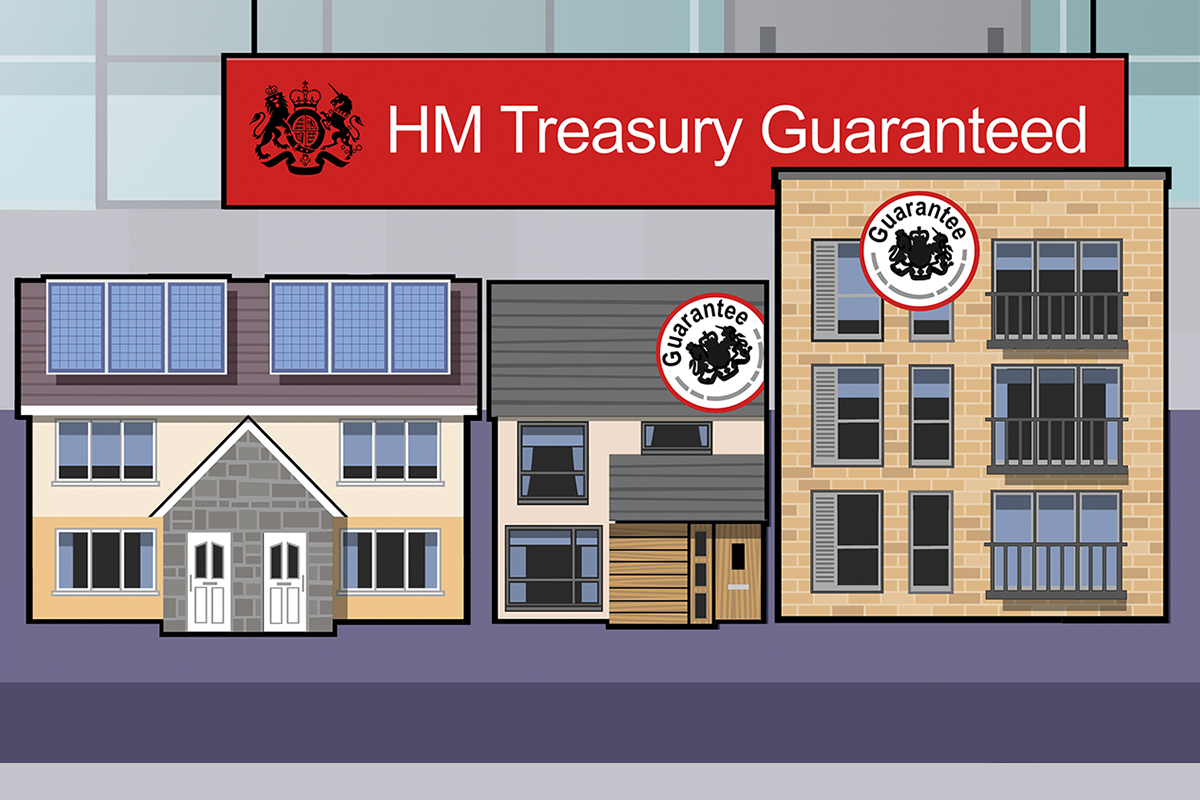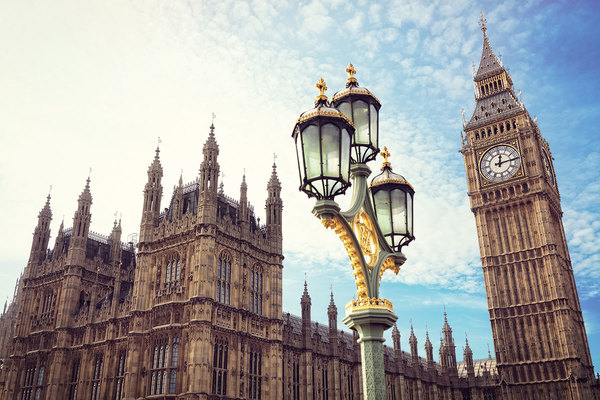You are viewing 1 of your 1 free articles
Affordable homes guaranteed? The return of guarantees finance for housing analysed
With Philip Hammond announcing the return of government loan guarantees for affordable housing, Luke Barratt looks at the policy in more detail
It seems barely a fiscal event goes by these days that doesn’t see the government U-turn on a previous policy. This month’s Spring Statement was no different.
Philip Hammond announced “a new £3bn Affordable Homes Guarantees Scheme, to support the delivery of around 30,000 affordable homes”.
This was confirmation of what many in the social housing sector had suspected for some time – that George Osborne’s 2015 decision to scrap government guarantees for housing association debt will be reversed.
The first thing to understand about this policy is that the government is not spending £3bn on new affordable housing.
Rather, the government has agreed to stand behind housing associations who borrow money through this scheme, up to a value of £3bn. In other words, if housing associations can’t pay lenders back, the government will.
While it is unlikely any associations will get into a position where they default on loan payments (it has never happened before), the government’s credit rating remains, almost by definition, much higher than any individual housing association. So the idea is that this will make borrowing cheaper.
But will this work in practice? And will it really deliver 30,000 affordable homes, as the government says?
A spokesperson for the Ministry of Housing, Communities and Local Government (MHCLG) tells Inside Housing that it is still developing the rules for how the scheme will work.
MHCLG confirms it will sign an agreement with a delivery partner to organise the guaranteed loans, with Homes England, the government’s housing delivery agency, managing the licence awarded to the delivery partner and reporting to MHCLG on performance.
One source who has been involved in the market engagement says they expect this process to go on until the end of July this year, at which point a procurement process will begin to find someone to organise the loans.
The last time such a scheme was set up was in 2012, when bond aggregator The Housing Finance Corporation (THFC) successfully won the tendering process. Over the period, it organised £3.2bn worth of guaranteed loans through its subsidiary, Affordable Housing Finance (AHF).
“Because we got a lower interest rate, it made schemes viable that potentially may not have stacked up otherwise, due to the amount of affordable housing”
This scheme was cancelled in 2015 but the money set aside for it only ran out last year, meaning the sector has not been long without guaranteed debt.
Piers Williamson, chief executive of THFC, says housing associations which borrowed through the scheme saved an average of 1% on interest rates, making for a total saving of £32m.
One finance director, who preferred not to be named, calls the rates from the last scheme “exceptional, staggeringly good”.
Some housing associations, such as Golding Homes in November 2017, even managed to borrow more cheaply than the UK government, thanks to money from the European Investment Bank (EIB).
Repeatedly, associations which borrowed through AHF using EIB money borrowed at interest rates of below 2%, compared to average borrowing costs of around 3.5% without the government guarantee.
With Brexit looming, the availability of EIB’s finance is extremely likely to deteriorate or disappear entirely. But the principle of the government guaranteeing debt would still result in interest rate savings.
Anne Costain, finance director of Radian Group, which borrowed £26.5m through the scheme in December 2017, tells Inside Housing: “Because we got a lower interest rate, it made schemes viable that potentially may not have stacked up otherwise, due to the amount of affordable housing.”
She adds: “The actual process of going through it is a bit more complicated and can require more negotiation than just going selling an own-name bond. You have to go through an extra layer of credit committee approval within government.
More on the Spring Statement 2019
The Spring Statement: what you may have missed
The documents accompanying the Spring Statement contained some important housing announcements that may have been overlooked, explains Jules Birch
Government announces £3bn affordable housing guarantees scheme
Chancellor Philip Hammond has announced that the government will create a £3bn Affordable Homes Guarantees Scheme aimed at supporting the delivery of about 30,000 affordable homes.
Guarantees welcome but more grant needed, sector says
Sector leaders have welcomed the announcement that the Affordable Homes Guarantees Scheme will be restarted – but warned that the government must provide more grant
Chancellor unveils infrastructure funding to boost housing in Spring Statement
The government has announced that £717m will be made available from the £5.5bn Housing Infrastructure Fund to unlock up to 37,000 homes
“But THFC, which facilitated, were very helpful in that. They know the industry really well anyway and we had some good conversations with them about where the credit committee concerns would be.”
Paul Phillips, finance director at Notting Hill Genesis, agrees, saying: “Certainly, my hope would be that if this is going to be done that THFC does it again. They know how to do it, basically. They’re people we know. They know the sector.”
Mr Williamson from THFC says it plans to bid to run the new scheme again, but says he’s not “complacent” and believes “there will be a lot more competition” this time around.
While it’s not certain that the new scheme will follow the same model as the one THFC ran, analysing the effectiveness of the previous programme should be helpful in considering whether this policy will deliver on the chancellor’s promise of 30,000 homes.
Like the new scheme, its explicit aim was to deliver new homes and so housing associations were only permitted to borrow money to build affordable housing that was not already being funded by government grant.
Piers Williamson
Mr Williamson says that the £3.2bn borrowed directly financed the construction of 27,000 homes.
Of course, housing associations can already borrow money on the bond markets in their own name to build homes. Although interest rates would be higher, social housing is seen as a relatively reliable investment due to the link with government spending and so interest rates tend to be fairly low even without a government guarantee.
THFC itself last week drew down £11.8m from a previously issued bond without a guarantee for the housing association Irwell Valley Homes, at an interest rate of just 3.18%. The association Incommunities also recently borrowed £250m on its own at a rate of 3.25%.
With that in mind, it is perfectly possible these homes would have been built anyway, with associations issuing their own bonds.
Mr Williamson, however, also argues that a further 6,000 homes can be attributed directly to the government guarantees, bringing the total up to 33,000. If so, this would be quite a coup for the government, which would have increased the development capacity of this borrowing by 22%.
His argument runs like this.
“Ultimately, housing associations are more fundamentally constrained by the volume of debt they can take on than by their marginal cost of debt”
Housing associations saved a total of £32m on interest rates when they borrowed through AHF. Assuming a cost per home of £150,000, this would deliver only an extra 213 homes.
However, interest rates on own-name bonds are generally around 3.5%. Therefore, £32m could be used to pay interest on another £900m of debt, which would deliver an extra 6,000 homes.
That extra £900m of debt, though, is a hypothetical figure, and some in the social housing sector are sceptical of it.
Phil Jenkins, managing director of Centrus, tells Inside Housing: “Ultimately, housing associations are more fundamentally constrained by the volume of debt they can take on than by their marginal cost of debt.
“Typically, they will be constrained by interest coverage or gearing in their business plan. A reduction in their marginal cost of debt is not going to make a material difference in terms of delivery capacity.”
In other words, although housing associations might be able to afford to pay more interest, their ‘gearing’, the level of debt relative to equity capital, would be the same with or without a guarantee.
For this reason, Mr Jenkins thinks the figure of 213 homes is the accurate one.
Ms Costain says this is a “fair point”, adding: “If you’re looking at the organisation in the longer term, one of the main metrics Moody’s or any credit ratings agency will look at is your debt levels and your gearing levels, so the fact you’re bringing that further debt in would impact your gearing levels and potential your ability to raise future debt anyway, regardless of the percentage cost of that debt.
“That may be a consideration before the actual interest costs becomes unaffordable.”
Anne Costain
One finance director of a medium-sized housing association says bluntly: “It makes diddly squat difference. We can borrow money at 3% so we’re not going to borrow more money. It’s not going to change our spending plans.
“The bottom line is, we can get more cheap money than we can spend. The restriction for us is being able to find the homes to buy and build.”
Nevertheless, they add: “Where it will make more of a difference is to smaller operators who can’t go out and get 3% bond money. They’d be paying a lot more, 4%, 4.5% for the money. So for them it’s a much better proposition.”
Ms Costain also makes the point that the money borrowed through AHF was at a fixed rate, meaning that the low interest rates will remain steady whatever happens to the economy. At the moment, historically low interest rates mean that most borrowing is pretty cheap, but in the event of a downturn, this could change.
“It makes diddly squat difference. We can borrow money at 3% so we’re not going to borrow more money. It’s not going to change our spending plans”
Especially with the uncertainty of Brexit at the moment, being able to have confidence that the cost of borrowing will remain low could be invaluable for social landlords.
In the end, it seems unlikely that anyone would deny that for a housing association, it’s positive to be able to borrow money at lower interest rates.
What’s more doubtful is whether the policy can really ever claim to have delivered the chancellor’s promise of 30,000 additional homes.














